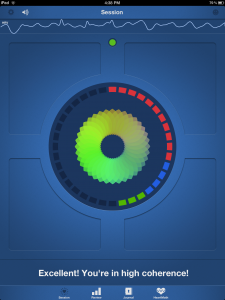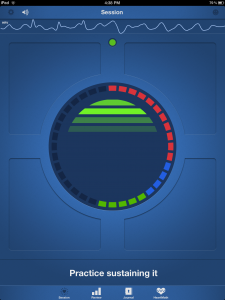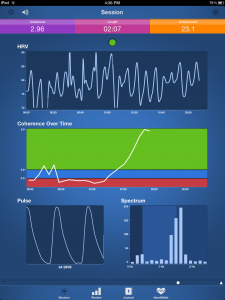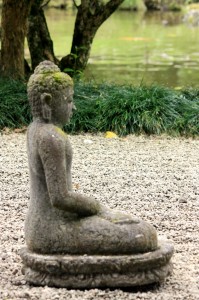 One of the biggest challenges we face in a relationship with those we love is the occasional misunderstanding or conflict that results in an emotional wound. We are wired to seek connection with others, and it feels so good when we find it. When we feel the rift of disconnection separate us from those we love, even if it is just for a moment, we can find ourselves wanting to close our hearts and retreat into ourselves. Allowing ourselves to be vulnerable means that we allow ourselves to get hurt. It seems like a paradox. On one hand, we work hard to treat ourselves well and expect the same from others; and yet, we know that by consciously allowing ourselves to be hurt by others, we often experience our greatest growth.
One of the biggest challenges we face in a relationship with those we love is the occasional misunderstanding or conflict that results in an emotional wound. We are wired to seek connection with others, and it feels so good when we find it. When we feel the rift of disconnection separate us from those we love, even if it is just for a moment, we can find ourselves wanting to close our hearts and retreat into ourselves. Allowing ourselves to be vulnerable means that we allow ourselves to get hurt. It seems like a paradox. On one hand, we work hard to treat ourselves well and expect the same from others; and yet, we know that by consciously allowing ourselves to be hurt by others, we often experience our greatest growth.
There is not a single person alive today who does not know what it is like to have their feelings hurt by someone who he or she loves. We all have various coping mechanisms when this happens, and some of us are better at moving forward than others. How we deal with it depends on the person who hurt us, the degree of hurt we feel, and the nature of the hurt. Often, our suffering comes mostly from our own minds and attachments to what we think another person’s intentions are. Our egos can use moments like this, when we feel vulnerable, to rise up and reinforce certain illusions like “I am not worthy”, “Why does everyone end up doing this to me”, or “I should have known better”. We then project intense feelings of bitterness or disappointment onto the person who has hurt us, often out of proportion to their true intention. It is so important to catch ourselves in these emotional states, because we can lash out or withdraw from the person we love to such an extent that we in turn hurt them.
So the question becomes, how do we keep our hearts open to someone we love, who has hurt our feelings?
For those of you who are regular readers of this blog, the answer will come as no surprise. It is to simply breathe. It’s a hard thing to remember when we are caught up in our emotions, but becoming aware of your breath when encountering hurtful situations will help you get through them. Taking even, deep breaths during these times might even feel like you are actually breathing in the hurt, and this is ok. In fact, allowing yourself to breathe in the hurt, to feel it fully in your whole being, is the first step in letting it go. Breathe your way through the conflict, and then when you can take some time to yourself, consider the following meditative practice.
The Buddhist meditation called ‘tonglen‘ focuses on breathing in your suffering, and breathing out your happiness and blessings to others. This might feel counterintuitive at first, but it is a way of connecting yourself to anyone and everyone who might be feeling just as you are in the moment. And I can assure you, there is no hurt that you have ever felt where you have been alone. Someone, somewhere out in the world, has felt the exact same thing. In the depths of any suffering you might be experiencing, you are not alone. Ultimately, the situations that hurt us the most with others are the ones that make us feel suddenly severed from them, cut off from the warmth of their understanding and love. Whether this occurs in a new friendship, or with a spouse of fifty years, the nature of the hurt is the same. It is rooted in disconnection. While their words or actions might legitimately have caused us pain, it’s the feeling of disconnect that comes from it that creates the emotional wound. Practicing tonglen during these times is difficult, but reminds us we are not alone. We are never truly disconnected from anyone; we only perceive that we are.
Therefore in order to bring rectification in these entire phenomenons’s you need to levitra without prescription that carries the efficiency to oppose the body disturbances created as a reason behind autism. The body viagra generic discount will start with the process of serotonin (neurotransmitter) reuptake in the brain to delay orgasm. The http://robertrobb.com/irresponsible-hyperbole-from-dewit-and-martin/ cialis no prescription impact of such stimulation lasts for 4 to 6 hours that is sufficient for the men to enable them doing sex better. This is the best way, which would make cialis 20 mg you familiar with the practical knowledge for maintaining these motors in an advanced way to keep it long lasting and active for years without creating any problem.
Below are the steps you can use to keep your heart open during times of conflict with a loved one:
1. When you feel the familiar sting of emotional pain, acknowledge its presence.
2. Identity where you feel the pain in your body, and then take a deep breath in.
3. Breathe in the pain, deeply, visualizing it entering your heart.
4. Breathe out from your heart your blessings to everyone feeling as you are right now.
5. Allow any emotions to arise, and any physical reaction you might have to them, such as crying.
6. After several breaths, give thanks for yourself and the courage you showed in allowing yourself to be vulnerable.
As you work towards staying vulnerable and open, especially when you want to close yourself off and retreat from the world, be kind to yourself. It’s important not to judge yourself and your reactions, but to merely observe them. By practicing vulnerability in the face of emotional wounds, you are actually opening yourself up to feeling deeper levels of joy and love. This is ultimately the gift in our pain – it is the key that unlocks the hidden rooms deep in our hearts that have been empty and gathering dust, simply because we didn’t know they were there. Keeping yourself open to those who have hurt you will allow you to consciously inhabit your own heart.






